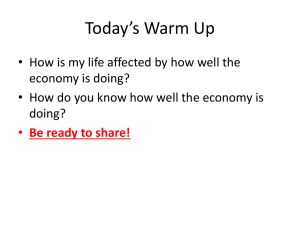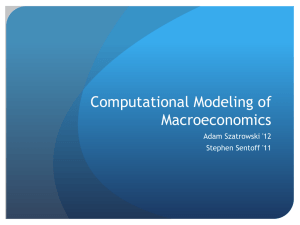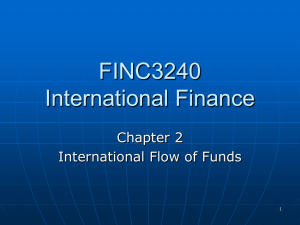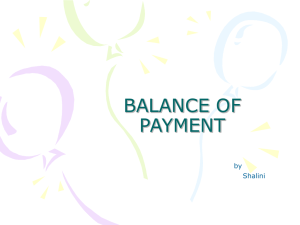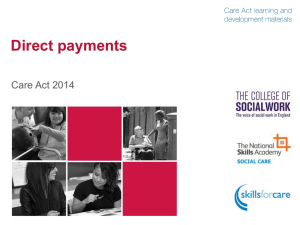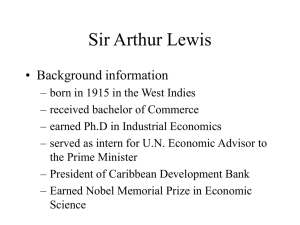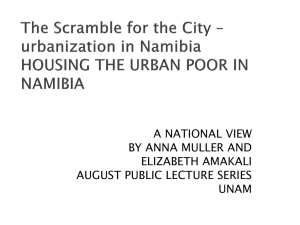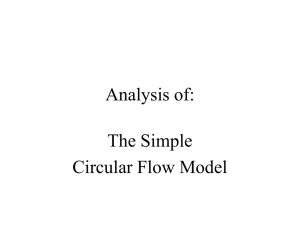The Circular Flow Model
advertisement
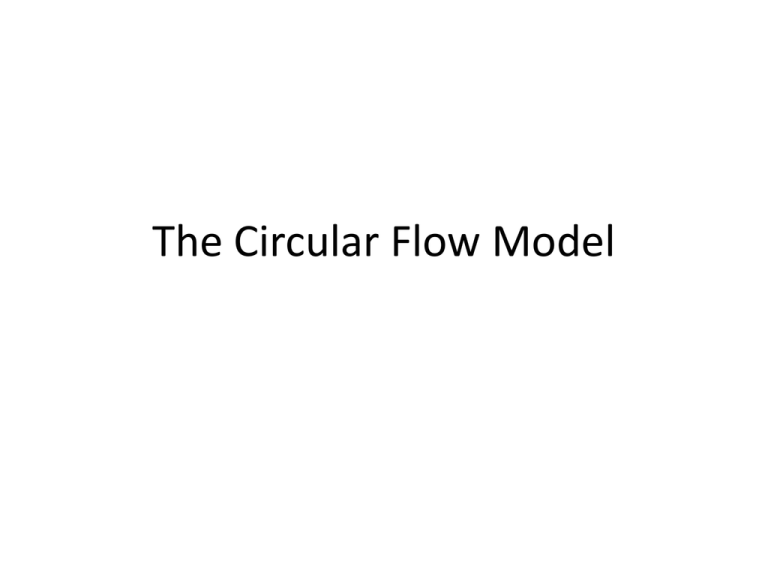
The Circular Flow Model The Circular Flow Model Shows the economic transactions that occur between households, firms and other sectors in the economy. Money flows- We will only focus money flows as it is simpler than trying to account for the physical flows. The Circular Flow of Income and Spending The simplest form of circular flow $ Consumption Goods and Services Producers Households Factors of production (Land, Labour, Capital Incomes $ rent wages interest profit Introduction of the Financial Sector Financial Institutions I (Investment) d Ca(Payments for goods and services) S (savings) c Producers Households b Y (Income) The financial Sector • Households do not spend all the income they earn they also save some. • Savings = Income – Consumption • Households usually save their income with banks. • Banks then use this money to lend to firms. • Firms then use these loans for investment (purchase capital) Interest • When firms borrow from banks they pay interest in return for these loans. • Banks however, also pay interest to households for saving money with them. • BUT! • Banks will charge a higher interest to borrowers than what they pay to savers. This is how they make an income. • E.g Joe saves 100 with BNZ and earns 5% interest in return for saving. BNZ then loans some of this money out but charges 10% for loans. Open Economy Overseas Sector • Not all goods available in NZ are produced in NZ. Imports – Imports = Goods made overseas but sold in NZ • Not all goods produced in NZ are sold here. Exports – Exports = Goods made in NZ but sold overseas Producers • Exports and Imports are real flows. They are actual goods and services being traded internationally. Money Flows – Export receipts= payments from overseas firms to NZ firms for the goods and services exported overseas. Overseas Sector Exports Import Payments – Import Payments = NZ producers payments to overseas firms for the goods and services they have Imports imported. – Remember export receipts are coming into NZ – Import payments are leaving NZ Export Receipts Producers An Open Economy Financial Institutions Overseas Sector I (Investment) d X (Export receipts) f M (Import g payments) aC (consumption) S (Savings) c Producers Households b Y (Income) Role of the Government • The government collects taxes – PAYE (pay as you earn) Income tax – GST (goods and services tax) 15% tax on any good or service you consume. – Company Tax – Taxes paid by producers to the government • Transfers – Subsidies that go to producers – Social Welfare- (Sickness benefit, superannuation, unemployment benefit) this flow goes straight to households. • Government Spending – Providing goods and services. (Schools, hospitals and the police force) – Payment for goods and services Role of the Government Financial Institutions Overseas Sector I (Investment) d X (Export receipts) f M (Import g payments) aC (consumption) S (Savings) c c G (Government Spending) Producers Households Government tr a (transfers) b Y (Income) T b (taxes) The Circular Flow Model Financial Institutions Overseas Sector d I (Investment) X (Export e receipts) M (Import f payments) aC (consumption) S (Savings) c G (Government Spending) i Producer Households Government tr h (transfers) b Y (Income) T g (taxes) The Circular Flow model Y= Incomes including rent wages interest and profit C= Consumption spending- the payment for goods and services S= Savings – income not spent on consumption this is a withdrawal from the economy I= Investment spending-purchase of capital goods. This is an injection into the economy X= Export receipts- Money received for exports sold M= Import payments- Payments made for imports purchased G= Government Spending- on collective goods T= Taxes the government collects from households and firms. These are used to fund G and Tr. Tr= Transfer money from one group to another, because of this transfer payments are not true expenditure. Withdrawals and Injections • Withdrawal = A money flow that leaves the circular flow – I= Investment spending-purchase of capital goods. This is an injection into the economy – X= Export receipts- Money received for exports sold – G= Government Spending- on collective goods • Injection= Flows of money into the circular flow model – S= Savings – income not spent on consumption this is a withdrawal from the economy – M= Import payments- Payments made for imports purchased – T= Taxes the government collects from households and firms. These are used to fund G and Tr. Money and Real Flows - Notes • Money Flow – are the payments made for goods purchased or the services being provided. – E.g the payment of wages in return for the use of labour • Real Flow – are the movements of actual goods and services between different sectors of the economy – E.g. the use of labour by a producer
